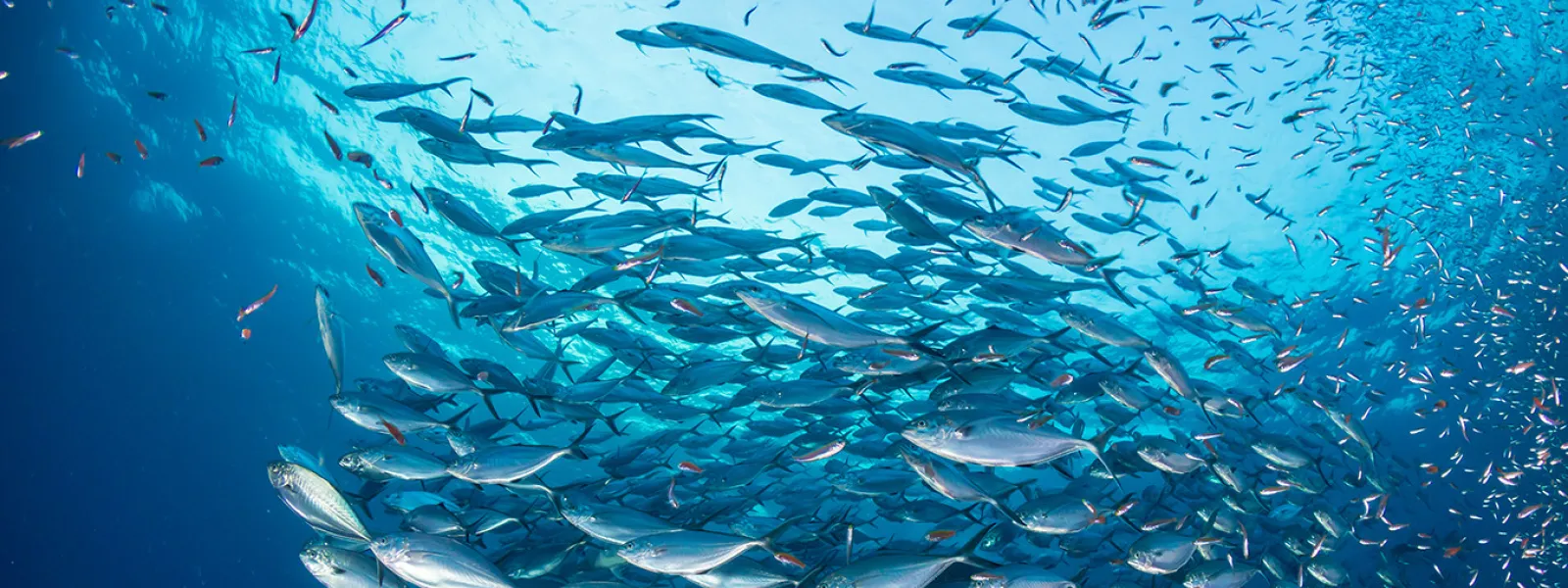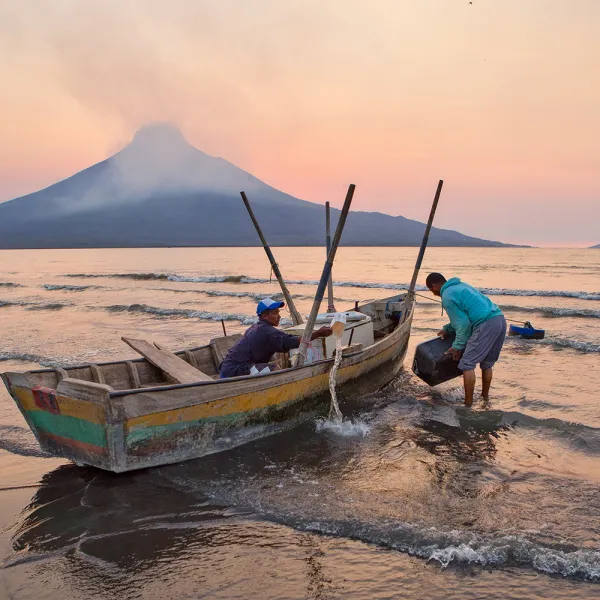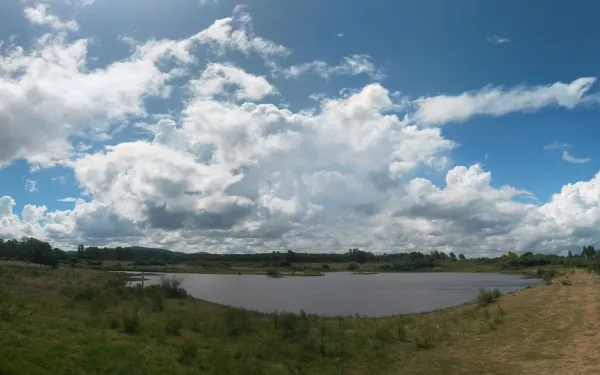
Project
ShutterstockTowards an end to subsidies that promote overfishing
Overfishing is one of the main problems for the health of our ocean. And the provision of negative subsidies to the fishing sector is one of the fundamental causes of overfishing.
Fishing subsidies are financial contributions, direct or indirect, that public entities grant to the industry.
Depending on their impacts, they can be beneficial when they promote the growth of fish stocks through conservation and fishery resource management tools. And they are considered negative or detrimental when they promote overfishing with support for, for example, increasing the catch capacity of a fishing fleet.
It is estimated that every year, governments spend approximately 22 billion dollars in negative subsidies to compensate costs for fuel, fishing gear and vessel improvements, among others.
Recent data show that, as a result of this support, 63% of fish stocks worldwide must be rebuilt and 34% are fished at "biologically unsustainable" levels.
Although negotiations on fisheries subsidies, within the framework of the World Trade Organization, officially began in 2001, it was not until the 2017 WTO Ministerial Conference that countries committed to taking action to reach an agreement.
This finally happened in June 2022, when member countries of the World Trade Organization reached, after more than two decades, a binding agreement to curb some harmful fisheries subsidies. It represents a fundamental step toward achieving the effective management of our fisheries resources, as well as toward ensuring global food security and the livelihoods of coastal communities.
The agreement reached at the 12th WTO Ministerial Conference provides for the creation of a global framework to reduce subsidies for illegal, unreported and unregulated fishing; subsidies for fishing overexploited stocks; and subsidies for vessels fishing on the unregulated high seas. It also includes measures aimed at greater transparency and accountability in the way governments support their fisheries sector.
The countries agreed to continue negotiating rules to curb other harmful subsidies, such as those that promote fishing in other countries' waters, overfishing and the overcapacity of a fleet to catch more fish than is sustainable.
If we want to have abundant and healthy fishery resources, it is time to change the way we have conceived fishing until now. We must focus our efforts on creating models of fishery use that allow for long-term conservation.
Partners:

Brazilian Federal Court rules for public scrutiny over BNDES loans
Unprecedented decision calls for transparency in use of taxpayer funds, critics say. Rio de Janeiro, Brazil. A federal appeals court based in Rio de Janeiro (TRF-2) has ruled that the Brazilian National Development Bank (BNDES) must publicly disclose technical reports used for justifying approval of major loans. The court decision was provoked by a lawsuit filed in 2011 by Folha de São Paulo, one of Brazil’s largest newspapers, after BNDES refused a request for access to “analytical reports” produced by bank staff to appraise loans above BRL 100 million (USD 46 million) approved between January 2008 and March 2011. The reports analyze the situation of intended borrowers, justifications for bank financing and credit risks of proposed operations. Despite its status as a public financial institution, ultimately funded by Brazilian taxpayers, BNDES has refused to publicly disclose such documents, citing federal legislation on banking secrecy (Complementary Law no. 105/2001). Last year, a federal judge in Rio de Janeiro, Dario Ribeiro Machado Junior ruled partially in favor of the Folha de São Paulo lawsuit, authorizing public disclosure of reports on BNDES loans to public enterprises, but not on operations involving private companies. The newspaper appealed the decision to the TRF-2, calling for disclosure of all documents, while BNDES also appealed, demanding that all reports on loan operations remain secret. In a 2-1 decision last week, the appeals court determined that reports on BNDES loan operations requested by the Folha de São Paulo should be made public, except for “banking and fiscal information of borrowers”. It is expected that BNDES will appeal the court’s decision. In casting her vote, Judge Carmen Silvia Lima de Arruda of TRF-2 concluded that the Folha de São Paulo possesses a Constitutional right, supported by a previous Supreme Court decision, to request public disclosure of BNDES documents that illustrate criteria for loan approval. Arruda’s decision argues that “in reality, BNDES does not publicize any data relevant to the analysis carried out by its technical departments concerning the opportunity and convenience of loans that have been contracted. The absence of publicity regarding such criteria in the operations of BNDES reveals a system of planned obscurity”. In a similar vein, fellow judge Guilherme Couto de Castro of TRF-2 voted that BNDES documents concerning its loan operations are “essential and of unquestionable public interest; there should be no impediments to the disclosure of such data”. The judge also argued that an unstated goal of BNDES, in denying public access to loan documents, is to avoid disclosure of “favors granted to the friends of the king”. Such mistrust reflects a growing controversy over a marked tendency within BNDES to favor a select group of powerful Brazilian multinational corporate actors in its lending portfolio, while failing to publicly disclose justifications for loan approval and credit risks. A particularly notorious example involves mining and oil tycoon Eike Batista, a so-called ‘national champion’ of the Lula and Rousseff administrations, that was the recipient of BRL 10.4 billion (USD 4.175 billion) in low-interest loans. Once Brazil's wealthiest individual, Batista dramatically fell from grace in 2013 when a series of high-risk business ventures failed to produce high returns promised by the billionaire causing widespread alarm that BNDES had no effective system for managing risks associated with its loans. The TRF-2 decision benefitted from a legal opinion provided by the Federal Public Prosecutors’ Office (Ministério Público Federal - MPF). In a document signed by federal prosecutor Luis Pereira Claudio Leiva, MPF argued that transparency is an essential element of BNDES’ operations, given that it is a public financial institution funded by Brazilian taxpayers that should be financing projects in the public interest. "The performance of BNDES deserves severe criticism due to its manipulation by political interests, with fuzzy criteria that reach the extreme of complacency in the face of defaults by borrowers and concessionaires," he said. “This ruling is a victory for transparency. The bank uses taxpayer money to back some of the riskiest loans in Brazil and abroad, and the costs of so many of these investments end up being shouldered by the public” said Brazilian lawyer Maíra Irigaray Castro, of Amazon Watch. “BNDES must open its books to the Brazilian public. That’s the only way to guarantee that taxpayer funds are used correctly.” In November 2011, the Brazilian Congress passed a bill on public access to information (Federal Law 12.527/2011) within the context of a voluntary multilateral initiative known as Open Government Partnership[1] which allows individuals to request information from government institutions that must be disclosed unless a clear justification can be provided on the need for confidentiality. Civil society organizations have long lobbied for transparency regarding BNDES loans in Brazil and elsewhere – claiming that the public has the right to scrutinize the bank's use of capital obtained from the country’s taxpayers. Particular attention has focused on controversial projects such as the Belo Monte mega-dam complex in the Brazilian Amazon, generously financed through a record-breaking loan package of BRL 25.5 billion (USD 11.6 billion). Despite the new legislation, BNDES has repeatedly denied requests for access to information on key aspects of its loans operations, such as analysis of social, environmental and economic risks. “This decision (of TRF-2) is a positive sign from the Brazilian judiciary that represents a small and important step for human rights protection and accountability of BNDES operations. The bank’s investments in large-scale development projects, such as Belo Monte and other large dams in the Amazon, have had serious impacts on the human rights of communities and on the environment.” said María José Veramendi from AIDA. “Belo Monte, for example, has precautionary measures from the Inter-American Commission on Human Rights because of the lack of protection of indigenous communities that are impacted.” Lack of transparency linked to deficient social and environmental safeguards In February 2012, the federal environmental agency, IBAMA, fined Norte Energia, S.A. a public-private consortium that holds the concession for the Belo Monte dam complex, a total for BRL $7 million for failing to implement required actions to mitigate the social and environmental impacts of the project, as stipulated in licenses granted in 2010 and 2011. The fine, which is under appeal at IBAMA, apparently provoked no concrete action from BNDES to address non-compliance with environmental legislation. During the implementation of BNDES-funded projects, monitoring of human rights and environmental legislation, including compliance with other specific loan conditions, has been notoriously deficient, critics say. When violations have been documented, BNDES has typically failed to take corrective action, including suspension of loan disbursements, unless environmental licenses themselves are suspended by IBAMA or court decision. According to Brent Millikan from International Rivers, suspension of environmental licenses is highly unlikely, given the high levels of political intervention within IBAMA and the judicial system. The number of civil lawsuits filed against BNDES-funded projects for violations of the rights of affected communities, labor legislation at construction sites and environmental legislation has become the focus of increasing attention in Brazil. A just-released study by investigative journals Agência Pública and O ECO identified a total of 80 lawsuits filed by state and federal Public Prosecutors against 17 of 20 large infrastructure projects financed by BNDES in the Brazilian Amazon between 2008 and 2012. According to the report, the most common motivations for lawsuits include defective environmental impact assessments, lack of prior consultations with affected communities as legally mandated, non-compliance with conditions of environmental licenses and violations of workers’ rights at dam sites, including unsafe conditions contributing to accidental deaths. The’ champion’ among infrastructure projects under litigation was Belo Monte, with 21 lawsuits filed over more than a decade. In September, the Federal Public Prosecutor`s Office (MPF) filed a lawsuit that included BNDES as a co-defendant with Norte Energia and IBAMA, citing a chronic failure to assess and mitigate impacts of Belo Monte on the Xikrin indigenous people that live near the dam site on the Xingu River. Further information Read the press release from the Ministério Público Federal on the TRF-2 decision (in Portuguese). Read the article in Folha de São Paulo on their lawsuit demanding transparency at BNDES (in Portuguese). See article on the Folha de São Paulo lawsuit against BNDES with link to the TRF-2 decision (in Portuguese). http://www.migalhas.com.br/Quentes/17,MI188278,101048-Inexiste+sigilo+bancario+em+relatorios+de+financiamento+produzidos Read the Bloomberg story “Batista Collapse Has Prosecutors at BNDES's Door”. See the article by investigative journalists on civil action lawsuits filed against BNDES-funded infrastructure projects in the Brazilian Amazon (in Portuguese). See MPF press release on new lawsuit against violations of Xikrin indigenous rights and environmental legislation at Belo Monte, including BNDES as a co-defendant (in Portuguese). [1] http://www.opengovpartnership.org/
Read moreDams, mines threaten indigenous rights: Recommendations from UN human rights expert
By Jessica Lawrence, Earthjustice's research analyst A longstanding goal of Earthjustice and the Interamerican Association for Environmental Defense (AIDA) has been to sound alarms at the United Nations, in national courtrooms and in international fora such as the Inter-American Commission on Human Rights about environmental and human rights violations associated with mines and dams. Indigenous peoples are particularly vulnerable to the harmful effects of such extractive and energy industries in their territories. Last April, Earthjustice and AIDA provided evidence of these harms, as well as recommendations about how to avoid them, to U.N. indigenous rights expert James Anaya, who recently issued a report on extractive and energy industries and indigenous peoples. Comments from Earthjustice and AIDA focused on mine closure, describing how inadequate closure, restoration or monitoring can cause severe, long-term environmental contamination that can violate indigenous and human rights. We identified steps that countries can take to prevent these problems, including enacting strong laws on pabipty of mine operators and requiring operators to provide financial guarantees to ensure adequate clean-up during and after mine closure. Such measures can help protect human rights to health, clean water and a clean environment, as well as indigenous rights to culture, food, a means of subsistence and their lands and natural resources. Anaya’s report includes a number of recommendations with environmental and health imppcations. Key recommendations include: Guaranteeing indigenous communities’ right to oppose extractive and energy projects without fear of reprisals, violence, or coercive consultations. If a government decides to proceed with a project without their consent, indigenous communities should be able to challenge that decision in court. Rigorous environmental impact assessment should be a precondition. Indigenous communities should have the opportunity to participate in these assessments, and have full access to the information gathered. Governments should ensure the objectivity of impact assessments, either through independent review or by ensuring that assessments are not controlled by the project promoters. Measures to prevent environmental impacts, particularly those that impact health or subsistence, should include monitoring with participation from the pubpc, as well as measures to address project closure. If governments and project operators followed Anaya's recommendations, it would substantially reduce the harm caused to indigenous peoples by the often shameful and irresponsible conduct of extractive and energy industries. AIDA, to which Earthjustice provides significant support, works with local communities to address human rights violations from extractive industries throughout the hemisphere, including the Barro Blanco dam in Panama, the Belo Monte dam in Brazil, the La Parota dam in Mexico, and mines in the Andean ecosystems of Colombia.
Read more
Letter to the President of the World Bank Group
DR. JIM YONG KIM PRESIDENT THE WORLD BANK GROUP Dear Dr. Kim: We are writing to express our deepest concern regarding the World Bank Group decision to start financing and promoting large hydroelectric projects as “sustainable energy.” We urge you to review the information about negative impacts that large dams have had on the environment and human rights in the Americas, and to reconsider that decision. Large dams commonly cause severe harm to the environment. Underwater decomposition of trees and plants releases major quantities of methane, contributing to climate change. Large dams degrade water quality and sanitation both upstream and downstream from the artificial modification of river systems. Degradation of aquatic ecosystems leads to loss of biodiversity. Seismic instability is another common consequence of dam construction. These environmental harms often violate human rights protected by international legal instruments. These projects repeatedly generate health risks, block access to traditional food sources, and interfere with the ability to earn a livelihood. They displace entire communities, interfering with the human rights to freedom of movement, property, housing, and just compensation. State sponsors of large dams routinely fail to produce comprehensive environmental and social impact assessments, which are required by international law. Access to the information that should be provided by such an assessment is essential to ensuring the human rights to informed consent and prior consultation. Specific international laws and standards that apply to indigenous, afro-descendant and tribal peoples are routinely ignored. In some cases, public protest to ill-considered dam projects is criminalized, contrary to international human rights law. Many organizations and institutions, including the World Commission on Dams, have identified these negative consequences. AIDA has also produced a report analyzing the effects of large dams on the environment and human rights, “Large Dams in the Americas.” The executive summary of the report (in English) and the full version (in Spanish) are attached to this letter. AIDA stands with the World Bank Group in supporting development in Latin America. But that development should be sustainable. It should not come at the expense of the environment and human rights. Promotion of truly renewable resources, including wind, solar, and geothermal energy, can also encourage development that sustains growing economies, thriving environments, and respect for human rights. We insist that the World Bank Group finance only projects that abide by international law and standards, and give due and full consideration to alternative energy sources and efficiency measures. We would be more than happy to help the World Bank Group to drive true, sustainable development and to promote projects that increase human well-being while also protecting the environment and human rights. We hope you find this information useful and incorporate it into World Bank policy.
Read more